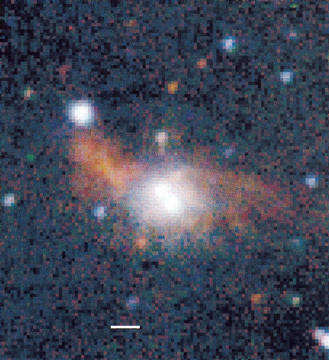| Discovery of FUors | ||
|
Most pre-main sequence stars vary in brightness. Fluctuations of roughly 1 mag are a defining feature of T Tauri stars and Herbig AeBe stars. These variations are often due to dark spots rotating with the stellar photosphere or bright spots at the base of a magnetic accretion column. Modest 1-3 mag eruptions have been observed in several young stars, such as EX Lup and DR Tau. Spectacular 3-6 mag eruptions occur in the FU Orionis variables, also known as FUors. George Herbig first associated FUor eruptions with pre-main sequence stars. FU Ori, which lies at the apex of a fan-shaped nebula within the dark cloud known as B35, brightened by 5 mag or more in roughly 200 days. Thirty years later, Welin discovered the 5 mag eruption of V1057 Cyg within an eccentric ring of reflection nebulosity. Herbig later noted the similarity between the optical spectra of these two stars with spectra of V1515 Cyg, a faint variable star embedded in arc-shaped nebulosity. He collected archival photographic photometry and identified a slow 2 magnitude rise in brightness over a twenty year interval. Herbig's demonstration that FU Ori - and other FUors - is a young star is straightforward. FUors are clearly associated with the dark molecular clouds where stars form: they have radial velocities indistinguishable from the cloud velocity and they have extinctions similar to those of other young stars in the cloud. Their optical spectra, including strong Li I absorption lines, are similar to spectra of several Myr-old T Tauri stars. One FUor, V1057 Cyg, had a pre-outburst spectrum resembling optical spectra of T Tauri stars. More than a dozen young stars are now recognized as FUors. Most have been observed to rise 3-5 mag in brightness in less than one year. V1515 Cyg is the only known example to require a decade to rise to visual maximum, but the historical light curves for some systems are poorly documented. A few objects have been called FUors based on distinctive properties common to the class. Many recently discovered FUors are more intimately associated with the densest dark clouds than the first members of the class, suggesting that some eruptions have been missed. | ||




